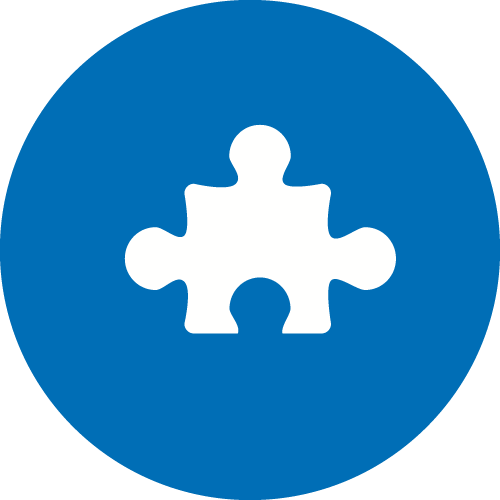Finland: Friendship groups have a positive impact in the long term
The Circle of Friends (Ystäväpiiri) initiative, which was created in Finland, is aimed at older adults who feel lonely in their everyday lives. Twelve supervised meetings over twelve weeks prove in many cases to be the starting point for new friendships that last for several years.


Ystäväpiiri-toiminta (in Finnish), Circle of Friends.


The Finnish Circle of Friends is aimed at lonely, mainly elderly, adults, although there is no age limit for participation. Anyone who feels that they belong to the target group may register an interest in the activity. The facilitators of the Circles of Friends assemble the groups and find participants through their own networks and local media.
“The only requirement is that participants must be prepared to change their habits, which isn’t suitable for everyone. They also commit to the group’s twelve meetings,” says Tarja Ylimaa, who works at the Finnish Association for the Welfare of Older People to coordinate regional Circle of Friends activities.
Participants in a Circle of Friends can be living at home or in a care home. There have also been separate groups for people with dementia and for those who communicate using sign language.


Groups of six to eight participants meet over a period of twelve weeks, with one meeting a week. Before the groups get started, the group facilitators interview each participant individually. By August 2022, the facilitators of the Circle of Friends had interviewed 11,500 participants.
“The interviews are an important element, that’s where the group lays its foundations,” says Ylimaa.
What is covered in the groups is up to each individual group and its needs. The matters that arise in the interviews are dealt with during the meetings.
“It’s important that the facilitators are responsive. It can be difficult for a lonely person to take the initiative, so it’s important that the facilitators encourage and listen to the participants. Which, in turn, enhances the self-esteem of participants,” says Ylimaa.
During the coronavirus pandemic, group meetings were held online, but both participants and facilitators prefer to meet face-to-face. Some groups that met online during the pandemic have continued to meet, sometimes online and sometimes face-to-face.
“Most people long to be able to meet others in real life,” says Ylimaa.
During coronavirus, it was noticed that many of those who were not so well-versed in digital matters did respond well and bravely by adapting to various technological solutions, thanks to effective technology and encouraging assistance.
“Nature also offered the opportunity for more protected encounters, and was a significant element of maintaining well-being. Our understanding of the importance of nature in group activities and in reducing loneliness has increased, and we’ve started to develop and utilise nature more in our activities,” says Ylimaa.
The goal is to prevent or reduce people’s loneliness, to empower the participants and their self-esteem, and to engender a desire to do things they used to do, but for some reason have not done lately.
“The idea is that participants should find a network or even a person that they can continue to meet or keep in touch with after the group ends,” says Anu Jansson, Director of Development & Participation at the Finnish Association for the Welfare of Older People.
The main objectives of the Finnish Funding Centre for Social Welfare and Health Organisations (STEA), which is funding the Circle of Friends, are that participants should receive support from others in the same situation and engage themselves socially. In addition to this, the life management of participants and their mental well-being are also measured.
“For group facilitators, who consist of both professionals in the field of social care and healthcare and volunteers, the goal is to understand loneliness theories, acquire keys to alleviate loneliness, learn about group theory and how to approach a lonely elderly person,” says Jansson.
The Circle of Friends groups meet twelve times under supervision, but 60 per cent of the groups choose to continue with meetings on their own once the organised activities are over.
“On average, the groups continue to meet for two years, and the longest a group has stayed together is for eight years,” says Jansson.


The activities of the Circle of Friends are based on gerontology, loneliness theories, group theories, group models and adult learning.
“The work wasn’t emotion-driven, but is based on research and theories,” says Anu Jansson.
She founded the Circle of Friends activities in Finland and has conducted research into loneliness among older people.
The starting point for the Circle of Friends came through a development project in gerontological research at the Finnish Association for the Welfare of Older People. The initiative for the project came from war veterans’ associations, who wanted to find out how loneliness can be alleviated. An RCT (randomised clinical trial) was conducted from 2002 to 2006. Thanks to very good results, the project and the research around it have continued.
“Initially, knowledge of loneliness among older people was rather weak in Finland,” says Jansson.
In total, there are 1,100 group facilitators for Circles of Friends in Finland. All group facilitators undergo a five-day training course, and they too are interviewed. The training courses are always given by two people, and each Circle of Friends group is led by two group facilitators, in order to create better group dynamics.
“Down the years, we’ve realised that participants find the group more reassuring when there are two facilitators. And when the facilitators commit to the group, so do the participants,” says Ylimaa.
Continued training is organised annually, and the regional operational leaders, who are all employed, offer mentoring and support to the group facilitators.
“The group facilitators enjoy really good support,” says Ylimaa.
In addition to the training, all group facilitators receive a comprehensive information package of about 200 pages, in which the activities of the Circle of Friends are explained and facilitators are able to study information about loneliness theory, group theory and how to lead a group activity.


After 20 years of experience with Circle of Friends groups, it is evident that the activities alleviate and prevent loneliness in the target group. Anonymised surveys confirm that 90 per cent of participants in the Circle of Friends groups believe that their loneliness has decreased as a consequence of participation in the activities, while 70 per cent feel that they have received support from others in a similar situation.
Previous participants have also assisted in the training courses by sharing their experiences.
“We realised that group facilitators found it difficult to talk about loneliness among the elderly, and that it might be easier if the participants themselves talked about their experiences. Then the group facilitators also understand that this is something you can and must talk about,” says Anu Jansson.
The accounts of the experts by experience are linked to theories of loneliness.
“Group facilitators also have the opportunity to ask how older people have experienced their journey, and what things might be worth highlighting,” continues Jansson.


Every year, a report is produced by the Circle of Friends organisation in which areas for development are reviewed. Both group facilitators and participants give feedback on both training courses and activities. During the twelve weeks that the Circle of Friends meets, a Circle of Friends trainer and mentor visit the group twice in order to assess the activity.
“Group facilitators write a learning diary, which can also be used as a basis for discussing what works well in the group and what can be further developed,” says Jansson.
As the activities are dependent on funding from STEA, annual surveys and reports are produced for the Circle of Friends’ activities. A ten-year follow-up study has also been conducted.
“We conduct qualitative research by interviewing participants. We’ve written articles for international publications, and down the years we’ve seen a doctoral thesis and about twenty smaller dissertations about the Circles of Friends,” explains Anu Jansson.
Below you can find links to some related articles: |


The activities of the Circle of Friends are funded by the Finnish Funding Centre for Social Welfare and Health Organisations (STEA). 38 per cent of group facilitators are volunteers and therefore receive no pay for their work. The rest are employed in the field of social care and healthcare. For them, the Circle of Friends is part of their normal work. For example, several municipalities offer Circle of Friends activities.
Anu Jansson views the Circles of Friends as being financially profitable – especially in the long term.
“Twelve organised meetings represent a small investment, considering what a long-lasting the benefit the Circle of Friends provides,” says Anu Jansson.
She believes that there should in general be more faith in people’s ability to take action and collaborate.
“Just imagine how much this kind of psychosocial group rehabilitation promotes the functional capacity of older people and saves costs. You might need a professional to get the activity up and running, but then people manage on their own. We should invest more in similar initiatives,” says Jansson.


At present, the Circles of Friends only operate in one Nordic country, Finland, but the model has been adapted and passed on to several countries via the international RECETAS project. The training material has been translated into English.
“We’ve learned a lot about how the model can be implemented in other countries thanks to the RECETAS project, especially about how to hold online training courses,” says Jansson.
Despite some challenges in holding training courses in other countries, the basic concept of the activity is still easy to transfer to another country or culture. This is because the Circles of Friends are always based on the interests and needs of the participants. The model may, however, need minor adjustments, as they became aware of in Finland when groups were set up for people who communicate using sign language.
“Deaf people do not perceive loneliness in the same way as people with normal hearing, and we had to adapt the model accordingly. You should be critical and attentive when evaluating and disseminating the Circle of Friends concept, like any model that is customer-oriented,” emphasises Jansson.
If you are interested in starting up a Circle of Friends model in your own country, you can contact the Finnish Association for the Welfare of Older People, which organises fee-based training courses in English.
“Setting up an activity simply by reading articles about the Circles of Friends is difficult, even if you can use some elements,” says Jansson.